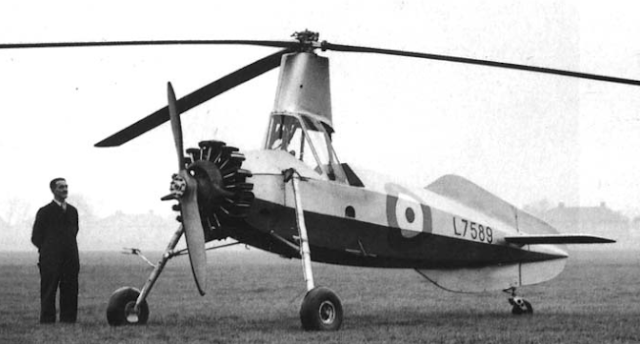Since the 1920s, Juan de la Cierva, a Spanish engineer based in Britain, has continued his research on gyroplanes. On these planes, the wing is a rotor moved by the relative wind caused by the displacement. The small wings are only supports for the control surfaces used to control the plane. The stall is thus impossible, because in case of engine failure or zero speed, the relative wind continues to rotate the rotor which carries the device. After the development of the C.19 in 1929, Cierva undertakes to solve the delicate problem still posed by these machines: at low speed, the control surfaces installed on the wing stubs and the drift do not respond and the gyrocopter is almost uncontrollable.
Difficult to know who Cierva or Argentinian Pescara, found the first solution that is still today the basis of flying wings. The cyclic pitch control, or direct control of the rotor, makes it possible to control the incidence of the blades at a given location of the rotation to orient the lift of the gyrocopter and thus to control it, even if the relative speed is very low. The wing stubs still used on the C.19 become useless. As on the previous Cierva models, vertical joints at the birth of the blades make it possible to balance the lift on each side of the device.
The prototype C.30 flies in April 1933. It carries a pilot and an observer. It is equipped with a three-bladed rotor, a 105 hp Armstrong-Siddeley Genet Major I five-cylinder star engine and a canvas fuselage. The four pre-production C.30P models feature folding blades, a reinforced landing gear and rotor axle, and the 140 hp Genet Major IA seven-cylinder star engine.
The production model, C.30A, was manufactured by Cierva Autogiro Company in 1934. Production licenses were granted to Avro in the United Kingdom (Avro 671 Rota Mk I), Lioré and Olivier in France (LéO C.30). , Focke-Wulf, Germany (FW C.30 Heuschrecke). Each manufacturer chooses to motorize the C.30 by a national engine. Avro sells many devices to private individuals, who will then be sold to foreign armies for testing. In 1936, a version designated C.40, two-seater side-by-side and with a general pitch (which makes it possible to modify the incidence of the blades on the whole rotation) which makes possible the vertical take-off is developed and sold a few copies to the RAF.
The C.30 is designed for observation missions, but its slowness, lack of armament and too much stability make it vulnerable to hunters. In 1934, Cierva himself made successful tests of landing on a Spanish seaplane transport, the Dédalo. Some missions are conducted during the Spanish Civil War. In the RAF, it serves in schools and for radar calibration. Some are modified as seaplanes. It is used until the end of the war.
The C.30 has developed piloting techniques that will be essential to the progress of rotating wings. Although he had a very limited operational career, he was nevertheless built with 148 copies.


0 commentaires :
Post a Comment